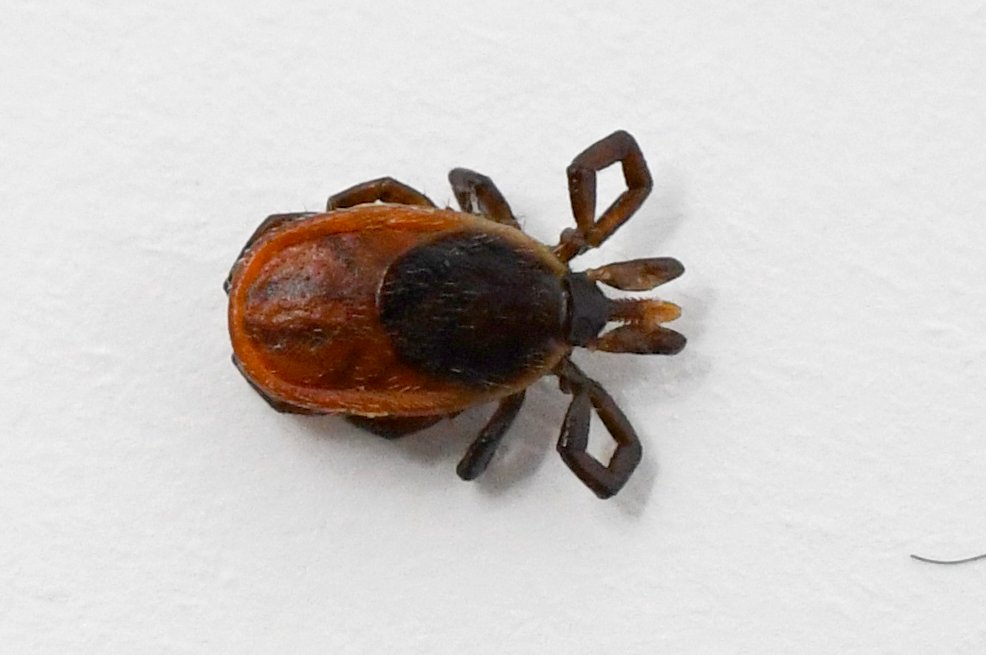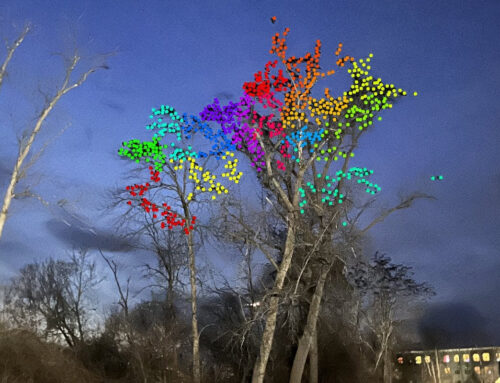This is part of a 5-part series on black-legged/deer ticks. Two disclaimers to start:
- There is a lot of conflicting information out there. I’ve tried to rely only on the most recent peer-reviewed scientific research rather than personal experience, anecdote, blogs, and other unreliable sources
- While I might be a Master of Science, I am certainly no doctor. Please, please, please do your own research, talk to your own experts, and be your own advocate!
Female deer tick, palps slight spread revealing barbed chelicerae
Food & Hosts
Finding Hosts
Like mosquitoes, ticks are capable of detecting changes in CO2 concentration, and move steadily to areas with higher concentrations (you can use dry ice to lure in ticks and then trap them with a robot: video). To find a new host, ticks “quest,” climbing out to the end of plants where they wait with their long front legs stretched out, hoping for a host animal to walk, hop, trot, or fly by. Their front legs are long and tipped with tiny pinchers, capable of a vice-like grip for latching onto fur or feather (video). As the animal walks by the tick adeptly clasps onto the host (it decidedly does not wildly leap forth from the trees above, raining down on unsuspecting victims). The tick then seeks out a sheltered spot on the host’s body to feed (again, following CO2, ticks are more likely to feed closer to the mouth).
Feeding
Ticks dig into the skin using two barbed harpoon like structures called chelicerae. They move these back and forth in a saw like motion before jabbing the gnarly barbed sword-like hypostome into the opening (video). The barbs help anchor the tick in place. But not wanting to risk being scratched off of a host, the tick also secretes a cementing compound that further ensures the tick stays put (link). Once firmly attached, enzymes in its saliva get to work, causing blood to pool near the tick’s mouth. With a little honeypot of blood, the tick easily and leisurely slurps up the blood. The tick will stay attached for roughly 3-5 days. before releasing an enzyme that breaks down the cement and allows the tick to detach.
Ideal deer tick habitat
Habitat
Deer ticks primarily inhabit deciduous woodlands, edges, and shrubby open areas nearby. Bushwhack from one side of a powerline clearing to the other and you’ll surely find some clinging desperately to your clothes (pro tip: wearing light colored clothing makes it easier to see ticks that have latched on). Tick dragging is a common and pretty simple method for detecting and monitoring for ticks (video). When you watch videos on tick dragging, you’ll quickly notice that the researchers all wear white haz-mat like suits. Soil type and forest cover (not host abundance) are the two most important factors in determining deer tick presence/absence (link). But the same study also showed that a population will become established if introduced to a habitat, so you’re not safe anywhere!!
Deer ticks are POSITIVELY associated with:
- dry to mesic deciduous forests
- fertile, well-drained soils with some clay
Deer ticks are NEGATIVELY associated with:
- wet to wet/mesic forests,
- grasslands
- coniferous forests
- acidic soils with low fertility
- clay soils





